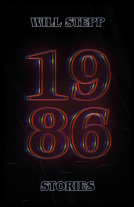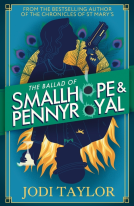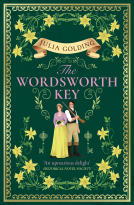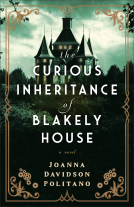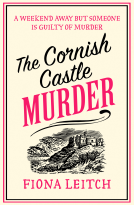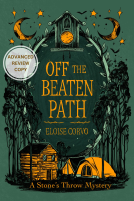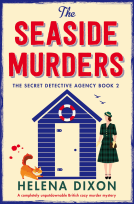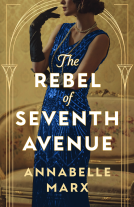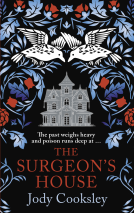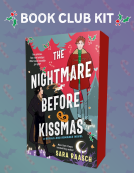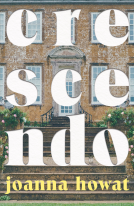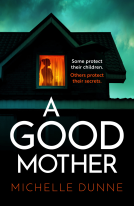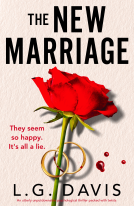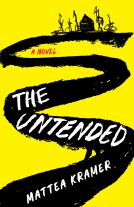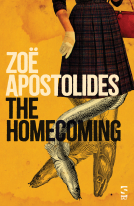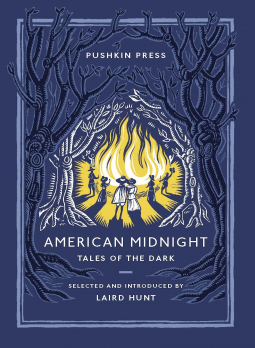
American Midnight
Tales of the Dark
by Various
This title was previously available on NetGalley and is now archived.
Send NetGalley books directly to your Kindle or Kindle app
1
To read on a Kindle or Kindle app, please add kindle@netgalley.com as an approved email address to receive files in your Amazon account. Click here for step-by-step instructions.
2
Also find your Kindle email address within your Amazon account, and enter it here.
Pub Date 31 Aug 2021 | Archive Date 9 May 2020
Pushkin Press | Pushkin Collection
Talking about this book? Use #AmericanMidnight #NetGalley. More hashtag tips!
Description
A masquerade ball cut short by a mysterious plague; a strange nocturnal ritual in the woods; a black bobcat howling in the night: these ten tales are some of the most strange and unsettling in all of American literature, filled with unforgettable imagery and simmering with tension. From Edgar Allan Poe to Shirley Jackson, Nathaniel Hawthorne to Zora Neale Hurston, the authors of these classics of supernatural suspense have inspired generations of writers to explore the dark heart of the land of the free.
The stories in this collection have been selected and introduced by Laird Hunt, an author of seven acclaimed novels which explore the shadowy corners of American history.
Contains:
'The Masque of the Red Death', Edgar Allan Poe
'Young Goodman Brown', Nathaniel Hawthorne
'The Eyes', Edith Wharton
'The Mask', Robert Chambers
'Home', Shirley Jackson
'A Ghost Story', Mark Twain
'Spunk', Zora Neale Hurston
'The Yellow Wallpaper', Charlotte Perkins Gilman
'An Itinerant House', Emma Frances Dawson
Advance Praise
"Fireside stories where guilt, distress and unforeseen illness strike a deliciously gothic note." -- Sunday Express Magazine
"Fireside stories where guilt, distress and unforeseen illness strike a deliciously gothic note." -- Sunday Express Magazine
Available Editions
| EDITION | Other Format |
| ISBN | 9781782275954 |
| PRICE | US$18.00 (USD) |
| PAGES | 192 |
Featured Reviews
I enjoyed this classic collection. There were a quite a few standouts but there were also couple stories mixed in that I could have done without. My favorites were The Yellow Wallpaper by Charlotte Perkins Gillman, The Masque of the Red Death by Edgar Allen Poe, Home by Shirley Jackson, and The Eyes by Edith Wharton. I also enjoyed Young Goodman Brown by Nathaniel Hawthorne and A Ghost Story by Mark Twain. All-in-all I found the majority of the stories interesting and thought-provoking. Some were pretty creepy and timely as well. I’d definitely recommend this collection to anyone who enjoys classic short stories incorporating elements of horror. These aren’t necessarily the type of horror stories that will keep you up at night but they do make you stop and think.
 Naomi D, Reviewer
Naomi D, Reviewer
This is a great collection of short stories. Some are downright creepy while others get you thinking. I'd recommend this book to anyone who likes short stories.
 Kayla B, Bookseller
Kayla B, Bookseller
A great read for anyone who is a fan of classic horror or short stories. With a solid mix of stories, this collection would be a great addition to any horror fans collection. Thank you to Netgalley and the publisher for the early review copy.
A creepy selection of stories, where, even reading in the sunshine the spine tingly suspense leaked through.
Particular faves: The Masque of the Red by Death Edgar Allan Poe and The Yellow Wall Paper by Charlotte Perkins Gilman.
 Joseph C, Reviewer
Joseph C, Reviewer
The “Pushkin Collection” by Pushkin Press is growing into a veritable library of attractive volumes of great literature. It is particularly strong on world fiction, featuring several Continental and Eastern authors in new translations. In this respect, American Midnight: Tales of the Dark, one of the latest publications to join its fold, is somewhat atypical – an anthology of classic horror stories by US authors, selected and introduced by Laird Hunt (himself a purveyor of contemporary speculative fiction of the “literary” sort).
Although this book will certainly appeal to lovers of horror, it seems to be directed at a more “mainstream” readership. The nine featured stories, in fact, include some very well-known works, alongside others which were new to me. Except for the somewhat surprising omission of Ambrose Bierce and H.P. Lovecraft, the usual suspects all make an appearance. The anthology starts with Edgar Allan Poe, the great American master of the macabre, specifically his The Masque of the Red Death, which feels particularly chilling when read at a time of a deadly pandemic. Robert Chambers’ cult short story collection “The King in Yellow” is represented by The Mask, the second story of the cycle. There’s the widely anthologized, yet always welcome, The Yellow Wallpaper, Charlotte Perkins Gilman’s classic feminist tale of psychological horror. Young Goodman Brown by Nathaniel Hawthorne manages to be both profoundly Gothic and quintessentially American in its exploration of the themes of sin and collective guilt in the context of Puritan New England.
Other stories are less familiar. Mark Twain provides an example of comic Gothic in A Ghost Story, inspired by the “Cardiff Giant”, one of the most famous hoaxes in American history. The “petrified giant” was created by atheist George Hull in a dig at fundamentalist Christians and their literal interpretation of Genesis (and its reference to “giants” roaming the Earth). The hoax gave rise to a famous lawsuit, after P.T.Barnum made a copy of the giant and branded the original giant as fake. Twain imagines a late-night meeting with the ghost of the “Cardiff Giant” who, duped by Barnum’s ‘copy’, ends up haunting the “fake” fake.
First published in “The New Negro” in 1925, Spunk was the third short story written by Zora Neale Hurston. In its portrayal of a love triangle in a community of the Deep South, it combines an earthy “realist” approach with supernatural elements. I was less impressed by An Itinerant House, by poet Emma Frances Dawson. Ambrose Bierce, himself a master of horror fiction, was a keen supporter of Dawson’s work and particularly her atmospheric descriptions of San Francisco: “a city of wraiths and things forbidden to the senses”. Her story is based on the most original premise in the volume –a “cursed” house which seems to travel from place to place, plaguing the protagonists of the tale. Unfortunately, this striking concept, with its interesting combination of the supernatural and early sci-fi, is buried in pages of intellectual discourse and cultural references which rob it of its immediacy.
Laird Hunt’s choices underline the vital contribution made by female writers to the classic horror genre. Indeed, my two favourite stories in the volume are written by women. Edith Wharton’s The Eyes falls within tradition of the classic ‘English’ ghost story, including its “tale-by-the-fireside” framing device. The narrator is invited to a dinner given by a friend of his, one Andrew Culwin, an aged “confirmed bachelor”. As is wont to happen, the talk turns to ghosts, and at the insistence of his latest protégé, Culwin gives an account of a mysterious apparition of a pair of eyes which plagued him in his youth. This apparently ‘trivial’ story reveals much about the psychological make-up of Culwin. Enigmatic and charged with sexual tension, this story gives no easy ‘solutions’ to the enigma of the eyes, leaving it up to readers to reach their own conclusions.
As in Wharton’s case, there’s more than a nod to the classic ghost story in Shirley Jackson’s Home. But just as Jackson reclaims for herself the haunted house genre in The Haunting of Hill House, here she gives her own spin to the tale of a naïve city dweller who moves to a country house with ghosts attached. Scary and dark, but with a wicked humour which is Jackson’s own, this is the perfect example of how classic horror can be reinvented to great effect.
Awesome collection of classic stories! I've already read some of them, but it's always nice to revisit familiar stories.
 John L, Reviewer
John L, Reviewer
A very welcome and entertaining collection of stories for Hallowe'en – or indeed any evening when this kind of fiction might appeal. We start with 'The Masque of the Red Death', which is more or less Poe at his best – packing a lot into what will be to some a surprisingly short little tale. Next, Nathaniel Hawthorne – a writer I've rarely if ever read – gives more than a sense of the O Henry to his legend of a Salem-set meeting with the Devil. Edith Wharton's story is a little too wordy in set-up, but in mysteriously plaguing a young man, only that night affianced, by a pair of spectral, red eyes at the foot of his bed, does make the hairs rise. Hardly a ghost story, but 'The Mask' by Robert W Chambers turns on ideas from Pygmalion, Romeo and Juliet and any number of stories featuring stereotypes of young artists – but the end result is surprisingly effective. It seems to be a favourite of Pushkin the publishers, though, as it's not the first time they've released a book with it in.
Shirley Jackson has some modern yokels saying 'ooh you don't want to be driving up that road in weather like this', and the recipient of that dread news taking it as a badge of honour, as she's a new resident in town. The piece is snappy and fun. Mark Twain might have been both those, but while he showed that you can have copious ghosts in a story and still get away with it, they didn't really suit the humour he finishes with. I've not come across the vernacular of Zora Neale Hurston before, but it was fairly easy to engage with the dialogue of the po' black men witnessing a cuckolded husband from the safety of their logging town's general store windows. Best here, as it is with pretty much anything it's published alongside, is 'The Yellow Wallpaper', a classic that is not strictly a genre piece, but is all the better for being whatever it is. Unfortunately we close with a dud, the piece 'An Itinerant House', which (a) relies on its audience, well over a century past its being written, knowing about a certain kind of mobile home, and (b) floods its tale of ill-wrought revenge with about two thousand literary quotes, spurts of poetry, flutters of music nobody will recognise, and more cultural references that make a right porridge of it all.
On the whole though, this book definitely stands as a fine collection. No longer will we all deem it necessary to go back to the Old World for our chills – this really does highlight the American canonical craft in and out of the genre labelled 'horror'. A strong four stars.
 Latasha G, Reviewer
Latasha G, Reviewer
The cover for this book drew me in. THEN i saw the TOC. My heart was filled with such happiness! I've read a few of these stories before and love them very much. The Yellow Wallpaper, Young Goodman Brown AND The Masque of the Red Death?! YES! I enjoyed these classics and the ones that were new to me as well.
 The Idle Woman ., Reviewer
The Idle Woman ., Reviewer
Sunny afternoons in May might not be the most obvious time to read ghost stories, but Pushkin Press's new collection of eerie American tales are enough to send a chill up the spine no matter what the time of year. Selected and edited by Laird Hunt, these classic stories span the 19th and 20th centuries, and their settings include barricaded castles; modest lodging houses; wooded roads; aesthetic Parisian apartments; forest glades; and supposedly comfortable country houses. The general trend is to unsettle rather than terrify, for which I was grateful, because my overactive imagination really doesn't need any encouragement in the dark reaches of the night. Including works by Edgar Alan Poe, Edith Wharton, Mark Twain, Shirley Jackson and Nathaniel Hawthorne, this is likely to include a couple of tales you're already familiar with, but will introduce you to at least a few new friends, ready to raise the goosebumps on your arms...
The best way to do this, I think, is to say a few lines about each of the nine stories included in this collection. That way you can see which stories are included - and make sure you're not duplicating too many things you already own - and, since each of the stories has its own distinct flavour, it does away with the need for awkward generalisations. Note the pleasing fact that five of the nine stories are by women.
The Masque of the Red Death (1842): Edgar Allan Poe
This is the big one, the story that everyone knows even if they haven't read it. When the world is stricken by a terrifying blood plague, Prince Prospero decides to thumb his nose at death: 'The external world could take care of itself. In the meantime it was folly to grieve, or to think'. Gathering one thousand friends, he retreats to a magnificent castle and closes the doors, embarking on a dizzying sequence of parties and banquets. It's the ultimate lockdown experience. But can you truly cheat death? One night, in the midst of a splendid masquerade ball, Prince Prospero is to meet his match. A story that gains new levels when read in the light of the present Covid-19 crisis, as we try to barricade ourselves within our homes and to keep the virus out. Unexpectedly timely and relevant.
Young Goodman Brown (1835): Nathaniel Hawthorne
I hadn't read this story before - in fact, I haven't read much Hawthorne at all, with the exception of The Marble Faun (which I loved) and The Seven Gables (which I didn't like quite so much). In this short story he whisks us back to 17th-century Salem, where the titular young man is heading off on a mysterious journey on an unspecified but dangerous night (Halloween, surely?). His young wife Faith begs him not to go, but Brown is determined to meet his destiny. However, when a sinister meeting in the woods leads him to question all that he has ever believed, his confidence falters. Faced with a stark choice between faith and belonging, what will he choose? And, having chosen, how will he ever trust his fellow man again? A curious story, with a remarkably civilised Devil, which obviously reminded me strongly of The Crucible; but I wonder whether all is truly as it seems. Are all the people whom the devil shows to Goodman Brown really there, or are they just phantoms, intended to undermine his faith in his honest neighbours? Thoughts in the comments please.
The Eyes (1910): Edith Wharton
This was one of my two favourite stories in the collection. It takes the form of a story told by firelight to the narrator by his friend Culwin, an elderly gentleman with a hint of misanthropy ('his study of the human race seemed to have resulted in the conclusion that all men were superfluous, and women necessary only because someone had to do the cooking'). Culwin recounts the extraordinary story of a pair of red-rimmed, demonic eyes that appear floating at the bottom of his bed on certain occasions. The first time he sees this apparition, he flees to Europe, but soon he will find that there is no escape. But is this truly a haunting? Wharton pulls off a clever ending to the story, which reminds us that of all our phantoms, sometimes it's hardest to escape ourselves.
The Mask (1895): Robert W. Chambers
Along with The Eyes, this was my other favourite story. It comes from a collection of Chambers's stories which centred around an eerie (fictional) play titled The King in Yellow, although here the link is a loose one (the character flicks through the play, and a quote from it provides the epigraph). Set in the artistic community in Paris, it follows the narrator's friendship with the sculptor Boris and his beautiful wife Genevieve, for whom our narrator has long felt a tendresse. Chambers writes rich prose, the kind in which you can lose yourself: luxurious descriptive passages conjure up the decorative wealth of Boris's elegant home, which centres on an Islamic-style bathing room with a sunken bath. This becomes significant, as one day Boris confesses to our narrator that he has made an extraordinary discovery: a solution that immediately petrifies living objects. Our narrator is tantalised, then horrified, realising the ghoulish potential of this discovery; and, when tragedy strikes, he fears that he will be haunted by Boris's rash deeds forever. But Chambers's story is a rarity: a not-exactly ghost story that allows for the possibility of a new beginning at its end. Unusual, haunting, and lovely.
Home (1965): Shirley Jackson
Shirley Jackson was bound to be included here. I've only read a couple of her stories so far, most notably We Have Always Lived In The Castle, which I thought was wonderful. Here we follow the Sloanes, a young couple settling into their new home on the outskirts of a small town: a far cry from their old life in the city. Ethel Sloane is determined to fit in, so she makes an effort to chat to the townsfolk, stocks up at their shops, and smiles at their superstitious worries about the road that winds up through the woods to her house. What's the matter with the road? It's narrow, but don't they trust her driving? Driving, it turns out, is to be the least of her worries when Ethel encounters a mysterious old woman with a shivering child at the side of the road. Definitely unsettling, and Jackson never quite tells us how the thing is resolved - if it ever is?
A Ghost Story (1870): Mark Twain
This story starts in the time-honoured fashion: a dark lodging house; an isolated room; strange noises in the night. Our narrator is clearly plagued by some kind of visitation, but you swiftly realise that Twain is deliberately laying it on thick for comic effect. When the narrator finally confronts the ghost that's causing all the trouble, it takes a most unexpected form. To make matters more embarrassing from the ghost's point of view, it turns out that it's haunting entirely the wrong place (and might, indeed, be even more misguided than that). Not only a delicious parody of ghost stories, but a witty satire on the Cardiff Giant, a supposedly petrified ten-foot-tall man, whose body had been unearthed on a farm in Cardiff, New York state in 1869. Drawing enormous crowds, the Giant was swiftly revealed as a complete hoax (if you take a look at photos, it's hard to understand why anyone was ever taken in: it's a statue of decidedly mediocre workmanship). Twain takes up the story and runs with gusto, in a tale that would have been sharply relevant at the time, and remains comic even without the context.
Spunk (1925): Zora Neale Hurston
A short but eerie story based around the oldest plot of all: hubris, and a fall. Spunk Banks is a swaggering god of a man, apparently irresistible to any woman on whom he sets his eye. At the moment it's Lena, the wife of meek, mild-mannered Joe Kanty, who barely has the courage to look his mocking neighbours in the eye ('his Adam's apple was galloping up and down his neck like a racehorse. Ah bet he's wore out half a dozen Adam's apples since Spunk's been on the job with Lena'). When Joe finally has the courage to stand up to Spunk, a tragic exchange leaves one man dead. But can envy and hatred last longer than life? The locals certainly think so, as a sinister series of events closes in on the members of this ill-fated love triangle. It was great to finally read something by Hurston (I have Their Eyes Were Watching God and Barracoon on my Kindle, but haven't yet started either of them). I initially found the rendition of accent and dialect rather difficult, but as I adjusted to it, it added rich atmosphere to this hot-house tale of sexual jealousy.
The Yellow Wallpaper (1892): Charlotte Perkins Gilman
I've written about this story before, but it's always a pleasure to reread this tale of frustration and isolation. Like The Masque of the Red Death, it gains a certain je ne sais quoi in the light of lockdown, when so many of us are spending more time with our wallpaper than we ever thought possible. A gifted writer, laid low with what must be post-natal depression, is spirited away by her physician husband for a country retreat. He rubbishes her psychological symptoms, insisting that she is physically well and that everything else is within her power to command; her mental health is a matter of will. Confined and babied, our narrator finds her frustrated creativity breaking out in disturbing ways as she studies the strangely patterned yellow wallpaper in their adopted bedroom: 'I get positively angry with the impertinence of it and the everlastingness. Up and down and sideways they crawl, and those absurd, unblinking eyes are everywhere'. And it becomes worse, as the patterns begin to take on new forms which reflect her own lack of fulfilment: 'it is like a woman stooping down and creeping about behind that pattern ... The faint figure behind seemed to shake the pattern, just as if she wanted to get out'. On one hand, a classic spine-tingling story. On another, a feminist classic in which the infantilisation and confinement of women leads to psychological collapse.
An Itinerant House (1897): Emma Frances Dawson
The final story of this collection tells of an act of cruelty followed by an act of misguided kindness. The residents of a San Francisco lodging house are shocked when their landlord announces that he's bringing his wife across the country to live with them. No one is more shocked than Felipa, the Mexican woman who believed that she was his wife in all but name. Felled by grief, and brought to the point of death, she is resurrected by the well-meaning lodgers using electrical currents. However, Filipa is not grateful for her restoration to life, and she latches on a muttered comment half-overheard during her stupor, that she is 'better dead than alive'. A living ghost, her evil influence lingers over the young men who tried so foolishly to alter the course of nature. As they disperse, they find their lives being haunted by strange events and tragic deaths. And everything seems to draw them back to San Francisco where, again and again, they hear tales of a house in which a room drives all within it to misery, suicide and death.
I confess that I was initially confused by the story. How could a house possibly move? Was that part of the story's eeriness? Not so, as it turned out. As so often happens, truth is stranger than fiction. Dawson refers to the custom of actually physically moving houses from one place to another, which was facilitated by the use of pre-fab iron structures. The moving of sturdier houses was documented in 1970s San Francisco by the photographer Dave Glass. He took photos of the extraordinary practice, which you can see here. And houses aren't all that have been moved. Telephone exchanges, presidential palaces, theatres and Marble Arch have all been shifted in mind-boggling feats of engineering savoir-faire.
This is a well-balanced collection, with stories from different periods, and in a variety of moods, with a good blend of old-fashioned ghost stories and more inventive paranormal tales. These are the kind of stories to prickle pleasingly under the collar in a Gothic way, rather than leaving the reader terrified to turn off the light at night, and they make for a wonderful introduction to the field of dark American fiction.
This review will be published on my blog on Tuesday 12 May 2020 at the following link:
https://theidlewoman.net/2020/05/12/american-midnight-2019-laird-hunt
American Midnight is a beautiful collection of classic "horror" stories. I had previously read almost all of these stories in middle/ high school. They are all very solid stories. They are not all scary, but horror has evolved greatly from when many of these stories were written and it takes a lot more in the year 2020 to be seen as spooky than it did back when these stories were first written. Poe's short stories introduced me to horror when I was about 10 years old, so his works will always hold a very special place in my heart. Is there anything new for the hard core horror lover like myself, probably not; however, it is a solid collection to add to the bookshelves. The cover is gorgeous and you can never go wrong with the classics!
I really enjoyed this - an eclectic anthology of mostly canonical short horror stories, all in their way fundamentally American. Obvious heayweights like Poe, Hawthorne and Jackson are represented, along with some less often thought of as horror writers like Zora Neale Hurston. The last story (An Itinerant House) was, especially, a delight and previously unfamiliar to me. The Pushkin Press edition looks like it will be be handsome in person, too. Recommended.
Thanks to Netgalley for the ARC of this book. A lot of great spooky stories to enjoy. I loved every one of them. Great shorta story collection.
 Elizabeth D, Reviewer
Elizabeth D, Reviewer
“A chilling collection of classic weird and supernatural tales from the dark heart of American literature.”
As soon as I saw the description for American Midnight: Tales of the Dark, I knew I had to read it. This collection of short stories is edited by Laird Hunt, and contains eerie stories all by American authors. Some were classic titles I instantly recognized, and others were new to me, but all of them gave me chills and kept me up at night.
Finding the energy to focus on reading has been difficult lately (thanks, COVID), and I typically only have the energy to read 20 pages or so before my attention starts to drift. At first I thought, “Wow, I’m never going to be able to finish a book at this rate!” But then I remembered that short stories exist, and reading became enjoyable again.
I’ve always been a fan of horror stories, so this collection was an automatic must-read for me.
American Midnight contains the following:
“The Masque of the Red Death” by Edgar Allen Poe
“Young Goodman Brown” by Nathaniel Hawthorne
“The Eyes” by Edith Wharton
“The Mask” by Robert W. Chambers
“Home” by Shirley Jackson
“A Ghost Story” by Mark Twain
“Spunk” by Zora Neale Hurston
“The Yellow Wallpaper” by Charlotte Perkins Gilman
“An Itinerant House” by Emma Frances Dawson
I appreciated the diversity in authors, and enjoyed the mix of sub-genres. Throughout the book we see ghosts, witches, haunted houses, plagues, and more. It was a great mix, and some stories definitely stood out to me more than others.
The most chilling for me was Edith Wharton’s “The Eyes.” I’d never read this story before, and think it’s fine if I never read it again. After finishing it, I fought the urge to check the end of my bed for paranormal apparitions, but was torn between wanting to make sure nothing was there, and the sheer horror of what I would feel if something did appear.
“The Yellow Wallpaper” was also exceptional. I’ve read this story before—once in high school, and again for an undergrad class—but it had been almost eight years since I’d last read it. Reading it again as an almost 30 year old woman was a totally different experience, and I found myself relating to the narrator in a whole new way.
I was also surprised by how much I enjoyed “A Ghost Story” by Mark Twain. Usually, I am utterly terrified of ghost stories, but this one made me sad. By the end of it, all I wanted to do was give the ghost a hug. It showed me that not all ghosts are necessarily scary or evil, and you shouldn’t always be afraid of them.
There were a couple stories that I didn’t particularly enjoy, but overall, this collection was fantastic. The forward was also wonderful to read, wherein the editor shared his own personal ghostly encounter.
If you’re a fan of spooky stories, short stories, or American literature, you’ll want to add this collection to your list.
Thank you to the publisher (Pushkin Press) for an electronic copy of this book via NetGalley. American Midnight: Tales of the Dark will be available on August 25, 2020 (in Canada), and can be pre-ordered or purchased wherever books are sold.
 Reviewer 551383
Reviewer 551383
The love we have for macabre stories is never ending. The enjoyment we get when reading stories like the ones in American Midnight will always be never ending. As humans we tend to like them, but deep down in our small black heart and soul we enjoy them so much more. These tales are a great work of art that we seem to have forgotten along the way. I highly recommend these fantastic stories just like I would recommend anything also written by all the authors in this great book.
 Bookseller 504103
Bookseller 504103
I cannot wait to stock this during Halloween and Christmas. A great collection of stories and an ideal gift for horror fans.
 Keith C, Media/Journalist
Keith C, Media/Journalist
This is an absolute joy to read and with so many classic short stories found within its pages, this is a definite treasure trove. The short stories included stories from esteemed authors as Edgar Allen Poe, Nathaniel Hawthorne, Mark Twain and a host of others, each one is a fantastic winner on what the best of horror shorts are.
The stories are basically all ghostly or hauntings though Poe’s short is slightly out of this realm. I am a big fan of Shirley Jackson and thought I have read everything she has written but I found Home in this collection which is a must for all Jackson fans and fans of ghostly visitations. Charlotte Perkin’s The Yellow Wallpaper is one of those classic novels that one hears about but seldom reads and it does live up to its reputation.
Overall, this is an excellent collection and one that I would not mind having as a hard copy on my shelf. Each and every story is pure gold and the different styles definitely complement each other. If one would like to really explore the masters who are at the top of their gain, this is a good place to start. Fantastic read all around.
 Reviewer 618436
Reviewer 618436
I had actually already read a lot of these stories, but a fantastic selection and I love the cover. I can totally see the appeal of purchasing this as a hardback and dipping into it every now and then. Absolutely iconic authors and great stories for curling up with a cup of tea on a cosy wintry night and creeping yourself out!
This is a solid collection of American short stories and a great starting point if you're just getting into classic horror or even just classic literature in general. I enjoyed the mix of stories and found it to be a well paced and balanced collection. A great book to have on your bedside table to dip in and out of when the mood suits. Thank you so much for the opportunity to read and review.
 Paromjit H, Reviewer
Paromjit H, Reviewer
Laird Hunt has collated a selection of dark short stories, some of which I was already familiar and for which he provides an introduction. The stories in this collection are as follows:
‘The Masque of the Red Death’, Edgar Allan Poe
‘Young Goodman Brown’, Nathaniel Hawthorne
‘The Eyes’, Edith Wharton
‘The Mask’, Robert Chambers
“Home”, Shirley Jackson
‘A Ghost Story’, Mark Twain
‘Spunk’, Zora Neale Hurston
‘The Yellow Wallpaper’, Charlotte Perkins Gilman
‘An Itinerant House’, Emma Frances Dawson
As you might expect with a short story collection, it proves to be the usual expected mixed bag, I loved some more than others. In Poe's tale, amidst a deadly plague, the Red Death, Prince Prospero throws a masquerade ball at which an unexpected guest turns up. Hawthorne's offering has Goodman Brown leave his wife, Faith, for a meeting that will colour his future. Wharton's contribution is set after a dinner and the ghostly storytelling of the haunting eyes. Chambers tells of the bonds of love, dreams and insanity between Boris, Genevieve and Alec, whilst Jackson relates the tale of Ethel Sloane not being put off by the fears and concerns the locals have of her travelling along a particular road. Twain's ghost story has a touch of humour, with a blanket being insistently tugged away, along with noises, stealthy footsteps, clanking and muttered sentences. Neale Hurston's speaks of a husband, Joe Kanty, his wife, Lena, blatantly going with another man in public, and Gilman writes of insanity, a marriage, and a horrid, disturbing and strange yellow wallpaper. Dawson finishes the collection with a story of a tragic house and disturbing the dead.
My favourites was the Shirley Jackson, Mark Twain and Zora Neale Hurston's stories. With autumn not too far way, this is a perfect collection that will appeal to those who enjoy the dark side of life, I think most readers will find some stories here that they will enjoy, and might even be driven to follow the authors other works! Many thanks to Pushkin Press for an ARC.
A wonderful anthology of American Gothic that shows the range of the genre. There's a good mix of classics (The Masque of the Red Death; The Yellow Wallpaper), stories from well-known authors (Wharton, Zora Neale Hurston, Hawthorne) and some wild-cards. My favourites are Shirley Jackson's typical mix of scary everyday, and 'Spunk' written in lively patois by Zora Neale Hurston. Short story collections can sometimes be uneven or a bit samey - this one gets the mix spot-on.
 Reviewer 596926
Reviewer 596926
A creepy and enjoyable collection of the old scary classics such as Edgar Alan Poe, Edith Wharton, Mark Twain and many others. All in all this is a very solid book from some of the best writers in history.
 Reviewer 546759
Reviewer 546759
Great collection of gothic tales. The Masque of the Red Death by Poe, The Yellow Wallpaper by Charlotte Perkins Gilman, and Home by Shirley Jackson are favorites of mine and was a treat to reread. The collection introduced me to The Eyes by Edith Wharton. Highly recommend.
 Micha S, Reviewer
Micha S, Reviewer
This is an excellent collection of ten dark, chilling American short stories. I was already familiar with ‘The Yellow Wallpaper’ by Charlotte Perkins Gilman, and enjoyed reading it again alongside an interesting mix of other gothic tales.
With an assortment of settings, characters and narrative styles, there’s sure to be stories that appeal to anyone who enjoys gothic literature. My favourites are ‘The Masque of the Red Death’ by Edgar Allen Poe and ‘An Iterant House’ by Emma Frances Dawson. I haven’t read many short stories since studying literature at university some years ago, but this collection has reminded me how enjoyable they can be and has prompted me to seek out more.
Thank you to NetGalley and Pushkin Press for the opportunity to read and review this title.
An amazing anthology of outstanding short stories by some of the greatest American writers. Because of my English lit degree, I was already familiar with a few but decided to reread them for the full experience. The stories are gripping and even creepy - the grotesque and uncanny elements are crucial for a good gothic story.
It was a great read, definitely would recommend to all the fantasy lovers who like to be spooked.
 Heather M, Reviewer
Heather M, Reviewer
The last short story collection I have to share with you for Short Story September is American Midnight: Tales of the Dark. This is a cold classic American horror stories, with an introduction by Laird Hunt (an amazing writer himself).
.
The stories are mostly well known, though the Shirley Jackson and Zora Neale Hurston ones were new to me.
.
🖤‘The Masque of the Red Death’ by Edgar Allan Poe
🖤‘Young Goodman Brown’ by Nathaniel Hawthorne
🖤‘The Eyes’ by Edith Wharton
🖤‘The Mask’ by Robert Chambers
🖤'Home' by Shirley Jackson
🖤‘A Ghost Story’ by Mark Twain
🖤‘Spunk’ by Zora Neale Hurston
🖤‘The Yellow Wallpaper’ by Charlotte Perkins Gilman
🖤‘An Itinerant House’ by Emma Frances Dawson
.
Well known or not, these stories are writing perfection. There is just something about the older stories, the beautiful writing, the lonely settings, the atmosphere that breathes off the page. The old writers knew how to scare you without blood and guts and gore and I love them for it. Even though I already knew most of the stories, I read them again and was practically giddy with horrified delight. These stories are like old friends that welcome you home at the end of a long modern day.
.
This book came out in the UK last year (on Halloween) and releases here in the US in August of 2021.
.
I was given a free copy of this book in exchange for an honest review.
 Donna T, Reviewer
Donna T, Reviewer
I really enjoyed this collection of stories! Laird Hunt did a fantastic job of selecting the weird, supernatural and eerie stories from classic authors. A few of these I have read before but enjoyed reading again and a few were new reads from favorite authors.
'The Masque of the Red Death', Edgar Allan Poe - 5 Stars
I mean it's Poe, how can you go wrong?!
'Young Goodman Brown', Nathaniel Hawthorne - 3 Stars
Obviously quite different than The Scarlet Letter but it just didn't do much for me.
'The Eyes', Edith Wharton - 4 Stars
This is my first read by Edith Wharton and I would love to check more of her work out; this story gave off such an unsettling feeling. I can't imagine waking up to find a pair of ghost eyes staring at me!
'The Mask', Robert Chambers - 3 Stars
I did love the Chemistry setting of the book.
'Home', Shirley Jackson - 5 Stars
Got to love Shirley Jackson! She has such a craft for writing horror. My favorite is still The Haunting of Hill House but this is a close second.
'A Ghost Story', Mark Twain - 4 Stars
I've read this previously as A Ghosts Tale but it looks to be the same story. An unsettling conversation between a waking man and a ghost.
'Spunk', Zora Neale Hurston - 3 Stars
Not my favorite love triangle.
'The Yellow Wallpaper', Charlotte Perkins Gilman - 5 Stars
I love the journal entries and something sinister boiling just beneath them. This evoked such a feeling of paranoia.
'An Itinerant House', Emma Frances Dawson - 3 Stars
This was my least favorite in the collection, good concept but weirdly executed.
I read this as an ARC but I will be picking up a final copy for myself, I would love to have this in my final collection.
Thank you to NetGalley for providing a free copy in exchange for an honest review.
This hair-raising little anthology serves to introduce modern readers to some of the most classic of American horror writers. As an early reader of horror, I was taken back to my teens as I read these stories again after many years. This is a decent selection of excellent stories that will appeal to horror fans.
 Harriet L, Bookseller
Harriet L, Bookseller
I really enjoyed the variety within this collection! I had heard of many, if not most of the authors in this collection, however I have to admit that I hadn't read many of their works. Thanks to this collection I have certainly found some authors which I will be looking into, and buying some of their other works in the future.
This is a fun collection of classic horror/suspense stories and will be especially appealing to those like myself who prefer traditional horror/suspense to its more graphic modern counterpart.
The collection kicks off with a lovely intro by Laird Hunt and is populated by a number of stories that will be familiar to many and some that will be new reads, though most readers will recognize all of the authors featured.
As with all collections that include works by different authors, this one is a little hit or miss on quality from story to story, but overall it’s largely populated by fun, well-crafted examples of the genre.
Among the highlights of the collection:
Edgar Allan Poe’s The Masque of the Red Death
Edith Wharton’s The Eyes
Shirley Jackson’s Home
Charlotte Perkins Gilman’s The Yellow Wallpaper
 Reviewer 246080
Reviewer 246080
This is a book full of classic stories that I really enjoyed. I recommend to any lover of a great short story especially horror fans
Having studied American literature as part of my degree I found this collection delightful.. Very creepy and thought provoking, these short stories all embody the traditional gothic horror narrative but twist in in their own unique was.
Highly recommended for any fan of suspenseful gothic horror.
Thank you Netgalley and the publisher for a copy in exchange for an honest review.
"A chilling collection of classic weird and supernatural tales from the dark heart of American literature.
A masquerade ball cut short by a mysterious plague; a strange nocturnal ritual in the woods; a black bobcat howling in the night: these ten tales are some of the most strange and unsettling in all of American literature, filled with unforgettable imagery and simmering with tension. From Edgar Allan Poe to Shirley Jackson, Nathaniel Hawthorne to Zora Neale Hurston, the authors of these classics of supernatural suspense have inspired generations of writers to explore the dark heart of the land of the free.
The stories in this collection have been selected and introduced by Laird Hunt, an author of seven acclaimed novels which explore the shadowy corners of American history.
Contains:
'The Masque of the Red Death', Edgar Allan Poe
'Young Goodman Brown', Nathaniel Hawthorne
'The Eyes', Edith Wharton
'The Mask', Robert Chambers
'Home', Shirley Jackson
'A Ghost Story', Mark Twain
'Spunk', Zora Neale Hurston
'The Yellow Wallpaper', Charlotte Perkins Gilman
'An Itinerant House', Emma Frances Dawson"
The inclusion of 'The Yellow Wallpaper' along makes this a must buy! All other (AMAZING) authors are icing on the cake!
 Stella G, Reviewer
Stella G, Reviewer
I stayed up many, many nights way too late reading story after story terrifying myself. Most of these stories I first read or really, I was likely read to by my dad when I was far too young to be reading these. There's no reason a 6 year old child should know about the Masque of Red Death but....I turned out fine, right?
Reading these stories again reminded me how amazing American horror literature is. This collection should be treasured.
Thank you to NetGalley and the publishers for the opportunity to read and review this book.
 Jaquelin E, Educator
Jaquelin E, Educator
A solid collection that does a great job offering a variety of types of American ghost stories written by a variety of different kinds of American writers from different periods of history and sometimes working in different styles (one really gets a sense of the cultural and metaphorical plasticity of the ghost from this collection).
The pieces by Chambers and Dawson might be a touch inaccessible out of context for a general reading audience; Chambers because "The Mask" makes more sense if one has read the rest of The King in Yellow, and Dawson because her prose is so weighed down by literary/cultural allusions to 19th century art and theater that might be perplexing for general readers without footnotes.
I loved this collection of story short stories so much, it is a beautiful blending of creepy stories from American fiction and literature, and includes some of the most well-known authors and some of their classic tales. This would be a fantastic addition to any library or to a personal collection of someone who likes spooky tales or ghost stories and it would also be a great read for spooky season. I love the cover art and the simplicity yet the details of it, it has a very spooky feel as well.
 Librarian 299542
Librarian 299542
American Midnight: Tales of the Dark is a mesmerizing anthology that delves into the eerie and unsettling corners of classic American literature. As an avid fan of dark fiction, I found this collection to be a captivating exploration of the macabre, featuring some of the most renowned names in the genre alongside lesser-known but equally gripping stories.
The book showcases a diverse array of tales, including Edgar Allan Poe’s haunting “The Masque of the Red Death,” Nathaniel Hawthorne’s unsettling “Young Goodman Brown,” and Edith Wharton’s chilling “The Eyes.” Mark Twain’s “A Ghost Story” provides a clever twist on the supernatural. Charlotte Perkins Gilman’s “The Yellow Wallpaper” stands out with its poignant exploration of mental health and societal constraints. Each story is a testament to the art of suspense and psychological depth, offering readers a rich tapestry of horror and intrigue.
Among the stories, I was particularly intrigued by those that were new to me. Zora Neale Hurston’s “Spunk” blends folklore with a dark narrative, adding a unique flavor to the collection, and Emma Frances Dawson’s “An Itinerant House” presents a fresh voice in the genre, leaving me eager to delve further into her work.
Overall, *American Midnight* is a superb anthology that celebrates the richness of American dark fiction. It combines classic favorites with hidden gems, making it a must-read for enthusiasts of the genre. The collection is thoughtfully curated, ensuring a thrilling and immersive experience from start to finish. Whether you’re well-versed in Gothic literature or just beginning to explore its dark realms, this book offers a compelling journey into the shadows.
 Juli R, Reviewer
Juli R, Reviewer
I love a good and scary short story collection, especially when it contains stories I have not read before. As such, I delighted in American Midnight, even if I'm not sure on the selection of stories. Thanks to Pushkin Press and NetGalley for providing me with a copy of this book in exchange for an honest review. My sincere apologies for the delay.
The collection features nine stories which I greatly enjoyed. "The Masque of the Red Death" by Edgar Allan Poe is sumptuous, if brief, and remains a lovely indictment of the rich. "Young Goodman Brown" by Nathaniel Hawthorne was new to me and once I was used to the old-school writing, I was intrigued at its discussion of good and evil, hypocrisy, and religion. I also hadn't read "The Eyes" by Edith Wharton before. It is a lot calmer, in a way, than the preceding story, as it starts in the traditional "let's gather round the fire and tell ghost tales"-atmosphere, but it is also a little more psychological. "The Mask" by Robert Chambers is a story I didn't really get to begin with. I'm still not sure I fully see what its doing, but it was sumptuous and delightfully dramatic. Meanwhile, Shirley Jackson was a genius and "Home" is a perfect example of why she is still so acclaimed. Featuring the horror of being new in a close-knit community, the horror of ghosts, and the horror of being slightly annoying, I enjoyed it very much. "A Ghost Story" by Mark Twain, meanwhile, has everything one might enjoy about a poltergeist and yet is also absurdly funny. Zora Neale Hurston's "Spunk" is a story of paranormal revenge, of getting what's due, and I enjoyed it very much. "The Yellow Wallpaper" by Charlotte Perkins Gilman is a classic for a reason and its ending continues to haunt me. It is also the most psychologically direct story in the collection and its inclusion intrigues me. The final story, "An Itinerant House" by Emma Frances Dawson absolutely gripped me in the beginning and I love its concept. It lost me a little in the middle, but its structure had me right back on the edge of my seat by the end.
I am intrigued by this collection's centering of the dark, both in the title and its tagline above. On the one hand I believe they were curated because of their authors' places in American literature. Many of these authors are institutions in and of themselves and the stories selected here among their best. But it is midnight and darkness which echo through them all. Some engage with a Christian sense of darkness, i.e., the Devil and the opposite of all things good and pure, while others centre on a more personal sense of darkness. The latter intrigue me most, how these stories engage with personal and moral failings, with the fears we hide. Overall, the stories are curated in such a way that they build on one another nicely, creating a sense of ever-changing and moveable dread.
As with every collection, not every story will resonate with every reader, but for anyone intrigued by the dark at the heart of American literature, this is the right place to start!
